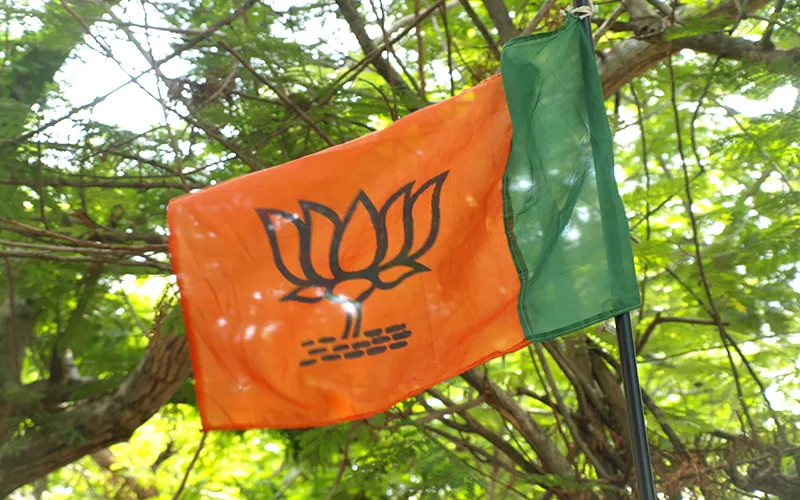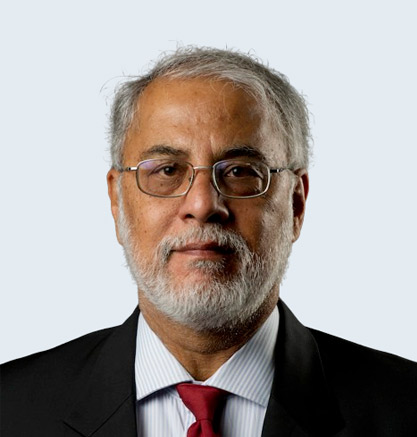-
CENTRES
Progammes & Centres
Location
Given its unique position, the politics and governance of J&K have always depended on the good relations between the governments in New Delhi and Srinagar. When they have been disrupted, as happened in the 1983-87 period, it was disastrous for the state and the country.

The Bharatiya Janata Party has been given a historical opportunity to transform Jammu & Kashmir's politics. Though the BJP launched 'Mission 44', no one really expected to do so well. But the party's determination and vigour in the campaign, which involved several visits by the PM, as well as the participation of top leaders like Arun Jaitley and Ram Madhav, panicked the separatists who have, in recent elections, given the call for boycotting elections.
But confronted by the possibility that their boycott could enable the BJP to pick up seats in the Valley, they abandoned the boycott platform. The inadvertent advantage of this was taken by the Congress and the National Conference which did better than expected. But by the same measure, the PDP got fewer seats than they were expected to get. The BJP won 25 seats, all from the Jammu region.
The figures tell their own story. The turnout in Sopur was 8.09 in the Assembly poll of 2002, 1.03 in the 2014 Lok Sabha poll and 30 per cent in the current Assembly election. Likewise in Hazratbal it was 7.11 in 2002, 1.53 per cent in the LS poll and 37.68 this time. In another Srinagar constituency, Batmaloo, 4 in 2002, 12.4 in the LS poll and 24.34 this time around. This was the story in virtually all the assembly segments where the separatists have a great deal of influence. For the record, the Assembly election of 2014 is considered the most credible ever to be held in the state. It has had the highest turnout, a respectable 66 per cent, and it was also the most peaceful. Perhaps, even Pakistan was scared of the possibility of the BJP making a breakthrough in the Valley and so it did not seriously try to disrupt the poll.
However, the outcome reveals a deep polarisation of voters. Thus, the BJP won all its seats from Hindu-majority areas of the state, while the PDP won from the Muslim-majority areas. The Congress lost 15 of its 17 seats in the Jammu area, but it picked up seats in the Muslim majority Valley and Buddhist dominated Ladakh, and retained its seats in the Muslim-majority area of Jammu. The Congress did not win a single seat from a Hindu-majority area. A major challenge for any party that takes office in Srinagar is that the state will have to bridge the yawning divide that has emerged between the Hindu-majority areas in Jammu and the Muslim-dominated Valley. Leaving aside the Congress, no party has a presence across the state's three major politico-geographic regions —Jammu, Kashmir and Ladakh.
The opportunity for the BJP comes from the fact that it is the second largest party in the state, as well as the party that runs the Union government in New Delhi.It is well known, of course, that the BJP has a special attitude towards Jammu & Kashmir. The founder of the Bharatiya Jana Sangh, the forerunner of the BJP, Dr Syama Prasad Mookerjee, died in tragic circumstances in jail, leading an agitation against Article 370 that gave J&K a special status. In the recent elections, the BJP played down its opposition to the article in a bid to make a breakthrough in the Valley.
But now it is in a unique position. On one hand, it must represent the largely Jammu-based Hindu constituency that has given it the number two position in the Assembly. On the other, it must ensure that the Valley which elects the larger number of MLAs is not alienated further. As the government that leads the Union government in New Delhi, it is the BJP's responsibility to craft a solution which will not only rest in its party's interests, but the interests of the country.
In a lesser measure, perhaps, the same dilemma confronts the People's Democratic Party (PDP) which won 28 of the 87 seats in the Assembly. It has been promised support by the National Conference which surprisingly won 15 seats and the Congress which has 12. So technically, it can form a government minus the BJP. But in such an event, the PDP chief minister will have to confront the fact that his government does not represent an entire politico-geographical area and a community of the state. Just how viable will such an arrangement be ?
Many people were initially sceptical that the "soft separatist" PDP and the "hard nationalist" BJP can come together. But there are ways and means to make it happen. For this the two sides may have to publicly move away from their stated positions — for example the PDP on the issue of self rule, and the BJP on the question of Article 370. Further, the PDP would have to give the BJP some assurances for the interests of the Hindu-majority areas of Jammu. This could be in the form of accepting the idea of regional autonomy which would see the emergence of self- governing councils in Jammu, Kashmir and Ladakh.
Like it or not, Jammu & Kashmir is not like other states in the country. It is the only one which is viewed as disputed by most countries of the world. It has been the target of an insurgency encouraged by a neighbour and has lost tens of thousands of people in to violence that has been endemic since 1990.
Given its unique position, the politics and governance of J&K have always depended on the good relations between the governments in New Delhi and Srinagar. When they have been disrupted, as happened in the 1983-87 period, it was disastrous for the state and the country.
(The writer is a Distinguished Fellow at Observer Research Foundation, Delhi)
The views expressed above belong to the author(s). ORF research and analyses now available on Telegram! Click here to access our curated content — blogs, longforms and interviews.

Manoj Joshi is a Distinguished Fellow at the ORF. He has been a journalist specialising on national and international politics and is a commentator and ...
Read More +